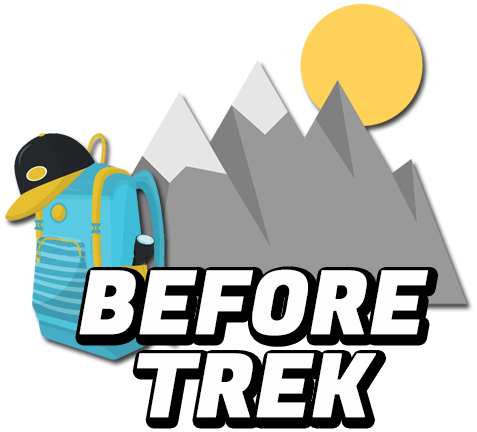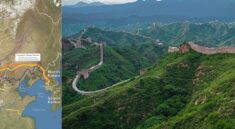Easter Island, or Rapa Nui in the native Polynesian language, is a remote island located in the southeastern Pacific Ocean, known for its iconic moai statues. These colossal stone figures, carved by the island’s early inhabitants centuries ago, stand as a testament to a fascinating and mysterious past. The island’s enigmatic history, combined with its stunning natural beauty, attracts visitors from around the globe.
Aside from the moai, Easter Island offers visitors a chance to explore its rugged coastline, volcanic craters, and pristine beaches. Visitors can immerse themselves in the island’s Polynesian culture, experiencing traditional dance performances, music, and cuisine. Additionally, archaeological sites such as the ancient village of Orongo and the quarry of Rano Raraku provide insight into the island’s rich heritage.
Whether marveling at the silent sentinels of the moai, trekking along scenic coastal trails, or simply soaking in the tranquility of its remote location, Easter Island offers a truly unforgettable experience for those seeking adventure, cultural immersion, and natural wonder.
How to get there
Getting to Easter Island, also known as Rapa Nui, typically involves flying from mainland Chile. Here’s how to get there:
- Flight from Santiago, Chile: The most common way to reach Easter Island is by flying from Santiago, the capital city of Chile. Comodoro Arturo Merino Benítez International Airport (SCL) in Santiago offers regular flights to Mataveri International Airport (IPC) on Easter Island. Multiple airlines operate flights between Santiago and Easter Island, including LATAM Airlines and Sky Airline.
- Flight from other Chilean cities: Some airlines offer flights to Easter Island from other cities in Chile, such as Antofagasta or Punta Arenas, with a layover in Santiago. However, flights from Santiago are generally more frequent and convenient.
- Flight from Tahiti: It is also possible to reach Easter Island from Papeete, the capital of French Polynesia, which is located approximately 4,000 kilometers (2,500 miles) northeast of Easter Island. Air Tahiti Nui operates flights between Papeete’s Fa’a’ā International Airport (PPT) and Easter Island.
- Cruise Ship: While less common, some cruise ships include Easter Island as a port of call on their itineraries. Travelers can embark on cruises from destinations such as Valparaíso or Tahiti that include stops at Easter Island.
It’s important to note that Easter Island is quite remote, and flights to and from the island may have limited availability and higher prices compared to mainland Chile. Additionally, travelers should plan their trip well in advance, especially during peak tourist seasons, to secure flights and accommodations.
Things to do
Easter Island, with its fascinating history, stunning landscapes, and vibrant culture, offers visitors a range of unforgettable experiences. Here are some of the top things to do on Easter Island:
- Explore the Moai Statues: Marvel at the iconic moai statues scattered across the island. Visit sites such as Ahu Tongariki, Ahu Akivi, and Rano Raraku, where you can see these ancient stone figures up close and learn about their significance and construction.
- Visit Orongo: Explore the historic village of Orongo, perched on the edge of a volcanic crater. This site was once the center of the island’s Birdman cult, and you can see well-preserved stone houses and petroglyphs while enjoying panoramic views of the coastline.
- Relax on Anakena Beach: Spend a day soaking up the sun on Anakena Beach, one of the island’s most beautiful and accessible beaches. Relax on the white sandy shore, swim in the crystal-clear waters, and admire the palm trees and nearby moai statues.
- Hike to Rano Kau: Take a scenic hike to the crater of Rano Kau, an extinct volcano that offers breathtaking views of the island’s rugged coastline and lush interior. Explore the crater’s lake and bird-filled wetlands while learning about the island’s geological history.
- Attend a Traditional Dance Performance: Immerse yourself in Easter Island’s Polynesian culture by attending a traditional dance performance. Watch dancers in vibrant costumes perform traditional songs and dances that celebrate the island’s heritage.
- Snorkel or Dive: Discover the underwater world surrounding Easter Island by snorkeling or diving in its pristine waters. Encounter colorful coral reefs, tropical fish, and maybe even sea turtles or dolphins.
- Horseback Riding: Explore the island’s landscapes on horseback with a guided tour. Ride along coastal trails, through volcanic terrain, and past archaeological sites while enjoying panoramic views of the Pacific Ocean.
- Visit the Archaeological Museum: Learn more about Easter Island’s history and culture at the island’s Archaeological Museum. Discover artifacts, exhibits, and interactive displays that provide insight into the island’s ancient civilization and modern-day life.
- Sunset Watching: Experience the magic of a Pacific sunset from one of Easter Island’s scenic viewpoints. Watch as the sun sinks below the horizon, casting a golden glow over the moai statues and surrounding landscape.
- Stargazing: Enjoy a night of stargazing on Easter Island, where the remote location and minimal light pollution provide optimal conditions for observing the night sky. Look for constellations, planets, and shooting stars while listening to stories of Polynesian celestial navigation.
These activities offer just a glimpse of the diverse experiences awaiting visitors to Easter Island, a destination rich in history, culture, and natural beauty.
Things not to forget
When traveling to Easter Island, it’s important to pack wisely to ensure a comfortable and enjoyable trip. Here are some essential items not to forget:
- Sun Protection: Easter Island’s location near the equator means strong sun exposure. Pack sunscreen with a high SPF, sunglasses, a wide-brimmed hat, and protective clothing to shield yourself from the sun’s rays.
- Insect Repellent: While not a major issue, mosquitoes and other insects can be present, especially in certain areas. Bring insect repellent to protect yourself from bites.
- Reusable Water Bottle: Stay hydrated during your explorations by bringing a reusable water bottle. Fill it up with potable water before heading out, as tap water may not be readily available in all locations.
- Comfortable Walking Shoes: Many of Easter Island’s attractions require walking or hiking over uneven terrain. Pack sturdy, comfortable walking shoes or hiking boots to ensure your feet stay supported and protected.
- Rain Gear: While Easter Island generally experiences a dry climate, occasional rain showers can occur, especially during the winter months (June to August). Pack a lightweight, waterproof jacket or poncho just in case.
- Camera and Binoculars: Capture the beauty of Easter Island’s landscapes and wildlife with a camera or smartphone. Binoculars can also enhance your experience, allowing you to spot distant moai statues or wildlife.
- Travel Adapter: Easter Island, like mainland Chile, uses Type C and Type L electrical outlets. Bring a travel adapter if your devices require a different plug type.
- Medications and First Aid Kit: Pack any prescription medications you may need, as well as a small first aid kit with essentials like pain relievers, bandages, antiseptic wipes, and motion sickness medication if you’re prone to seasickness.
- Snacks and Water: While there are restaurants and shops on Easter Island, options may be limited and prices higher than mainland Chile. Bring snacks and water to keep yourself fueled and hydrated during your explorations.
- Travel Documents: Don’t forget to bring your passport, travel insurance information, and any necessary visas or permits. It’s also a good idea to carry a printed or digital copy of your itinerary and important contact information.
By packing these essential items, you’ll be well-prepared to enjoy your adventure on Easter Island without any unnecessary hiccups.
Best time to visit
The best time to visit Easter Island, also known as Rapa Nui, depends on your preferences for weather, crowds, and activities. Generally, the island experiences pleasant weather year-round, but there are some factors to consider:
- Dry Season (Late Spring to Early Fall): The dry season on Easter Island typically runs from late September to early April. During this time, the weather is generally sunny with minimal rainfall, making it ideal for outdoor activities like hiking, sightseeing, and beach outings. This period also coincides with the island’s warmer temperatures and fewer clouds, offering excellent conditions for photography and stargazing.
- Peak Season (December to February): The summer months of December to February are considered the peak tourist season on Easter Island. During this time, the island sees an influx of visitors, especially around the Christmas and New Year holidays. While the weather is warm and sunny, expect larger crowds at popular attractions and higher prices for accommodations and tours. It’s advisable to book accommodations and activities well in advance if traveling during this period.
- Shoulder Seasons (Late Spring and Early Fall): Late spring (October to November) and early fall (March to April) are considered shoulder seasons on Easter Island. These months offer a balance between pleasant weather, fewer tourists, and more affordable prices for accommodations and activities. Traveling during the shoulder seasons allows you to enjoy the island’s attractions with milder temperatures and smaller crowds.
- Winter Season (Late Fall to Early Spring): The winter months of May to August bring cooler temperatures and occasional rainfall to Easter Island. While the island is still accessible and experiences fewer tourists during this time, some outdoor activities may be affected by the weather. However, if you’re interested in witnessing the island’s lush green landscapes or participating in cultural events like the Tapati Rapa Nui festival in February, winter can be a rewarding time to visit.
Ultimately, the best time to visit Easter Island depends on your preferences for weather, crowds, and activities. Whether you choose to visit during the dry season for optimal conditions or opt for quieter shoulder seasons to avoid crowds, Easter Island offers unique experiences year-round.
What is the mystery of Easter Island?
The mystery of Easter Island, also known as Rapa Nui, revolves around its enigmatic moai statues and the ancient civilization that created them. Several aspects of Easter Island’s history and culture remain unanswered, contributing to its enduring mystique. Some key mysteries include:
- Moai Statues: The most iconic feature of Easter Island, the moai statues, were carved by the Rapa Nui people between the 13th and 16th centuries. These colossal stone figures, some weighing up to 80 tons, were erected on stone platforms called ahu across the island. The purpose of the moai and the methods used to transport and erect them remain subjects of debate among historians and archaeologists.
- Rapa Nui Civilization: Little is known about the Rapa Nui civilization that inhabited Easter Island before European contact in the 18th century. Scholars continue to study the island’s archaeological sites, oral traditions, and written records to understand the society’s origins, organization, and eventual decline.
- Collapse of the Civilization: The decline of the Rapa Nui civilization is a subject of much speculation and debate. Theories range from environmental degradation and resource depletion to social and political factors, including warfare and societal collapse. Understanding what led to the downfall of this once-thriving society remains a central mystery of Easter Island’s history.
- Cultural Practices and Beliefs: The religious and cultural practices of the Rapa Nui people, including the Birdman cult and the construction of ceremonial platforms, such as Orongo, add to the island’s mystery. Artifacts, petroglyphs, and oral traditions provide glimpses into these practices, but many details remain elusive.
- Isolation and Contact: Easter Island’s remote location in the southeastern Pacific Ocean, over 2,000 miles from the nearest landmass, raises questions about how and why the island was settled. The arrival of the first settlers, their navigational skills, and the impact of European contact are subjects of ongoing research and speculation.
The mystery of Easter Island continues to captivate researchers, historians, and visitors alike, drawing attention to the island’s unique cultural heritage and the challenges of understanding its ancient past.
Why is Easter Island so special?
Easter Island, also known as Rapa Nui, is special for several reasons, each contributing to its unique allure and fascination:
- Moai Statues: Easter Island is famous for its iconic moai statues, massive stone figures carved by the indigenous Rapa Nui people between the 13th and 16th centuries. These monolithic sculptures, some standing as tall as 33 feet (10 meters) and weighing up to 80 tons, are scattered across the island and are a testament to the ingenuity and craftsmanship of the ancient inhabitants.
- Cultural Heritage: The island’s rich cultural heritage, including its unique Polynesian language, traditions, and oral history, sets it apart as a distinct cultural destination. Visitors can learn about the island’s indigenous customs, such as the Birdman cult and the creation of intricate petroglyphs, which provide insights into the island’s ancient civilization.
- Archaeological Sites: Easter Island is home to numerous archaeological sites, including ceremonial platforms (ahu), village remains, and quarry sites where the moai were carved. These sites offer visitors the opportunity to explore the island’s history and gain a deeper understanding of its ancient inhabitants.
- Natural Beauty: Beyond its cultural attractions, Easter Island boasts stunning natural landscapes, including rugged coastlines, volcanic craters, and pristine beaches. Visitors can enjoy hiking, snorkeling, and wildlife viewing amidst the island’s scenic beauty, with opportunities to see native flora and fauna.
- Remote Location: Easter Island’s remote location in the southeastern Pacific Ocean, over 2,000 miles (3,200 kilometers) from the nearest landmass, adds to its allure. Its isolation lends an air of mystery and adventure, making it a destination sought after by travelers seeking off-the-beaten-path experiences.
- Cultural Experiences: Visitors to Easter Island can immerse themselves in the island’s vibrant culture through traditional dance performances, music, and cuisine. Cultural events and festivals, such as the Tapati Rapa Nui festival held annually in February, offer opportunities to witness and participate in traditional rituals and celebrations.
- Conservation Efforts: Easter Island’s unique cultural and ecological significance has led to conservation efforts aimed at preserving its natural and archaeological heritage. Initiatives to protect the island’s flora, fauna, and cultural sites ensure that future generations can continue to appreciate its special qualities.
These factors combine to make Easter Island a truly special destination, attracting visitors from around the world to explore its ancient mysteries, cultural treasures, and natural wonders.
Does anyone live on Easter Island today?
Yes, people do live on Easter Island today. Despite its remote location in the southeastern Pacific Ocean, Easter Island is inhabited by a population of around 7,000 residents as of 2021. The majority of the island’s inhabitants are of Polynesian descent and are known as Rapa Nui. They are the descendants of the ancient indigenous people who first settled the island centuries ago.
Most of the island’s residents live in the main town of Hanga Roa, located on the western coast of the island. Hanga Roa is the administrative, commercial, and cultural center of Easter Island, housing amenities such as shops, restaurants, schools, and government offices.
While tourism plays a significant role in the island’s economy, residents are also engaged in activities such as fishing, agriculture, and artisanal crafts. Additionally, the Rapa Nui people are actively involved in preserving their cultural heritage and protecting the island’s natural environment.
Despite its small population and remote location, Easter Island has a vibrant community that celebrates its unique Polynesian culture and rich history while embracing modern influences and advancements.
Why is it called Easter Island?
Easter Island is called so because it was first encountered by Europeans on Easter Sunday in 1722. The island was sighted by Dutch explorer Jacob Roggeveen on April 5, 1722, during his expedition across the Pacific Ocean. Roggeveen named the island “Paasch-Eyland,” which translates to “Easter Island” in English, in honor of the day of its discovery.
The indigenous name for the island is “Rapa Nui,” which refers to both the island itself and its native inhabitants. The origin of the name “Rapa Nui” is believed to derive from the Polynesian language, although its exact meaning is uncertain. It is thought to possibly mean “Big Rapa,” referring to its similarity to another island called Rapa Iti, or “Great Rapa,” indicating its larger size.
Today, the island is known by both names, Easter Island and Rapa Nui, each reflecting different aspects of its history and cultural significance. While “Easter Island” refers to its European discovery, “Rapa Nui” acknowledges the island’s indigenous heritage and the people who have inhabited it for centuries.
Image credits: en.wikipedia.org





